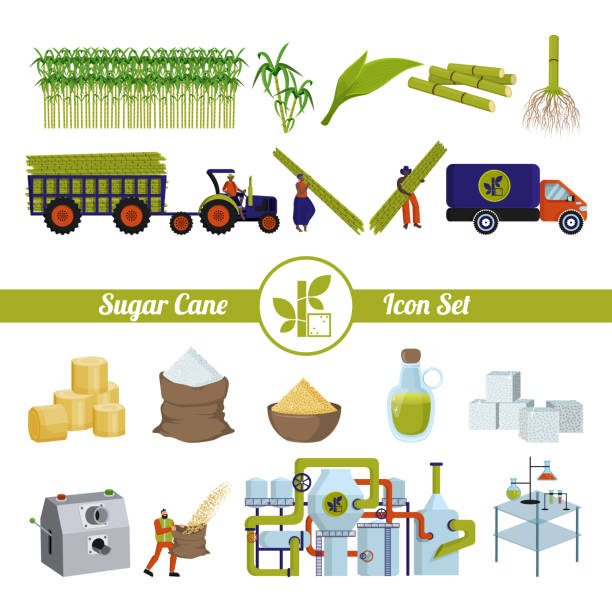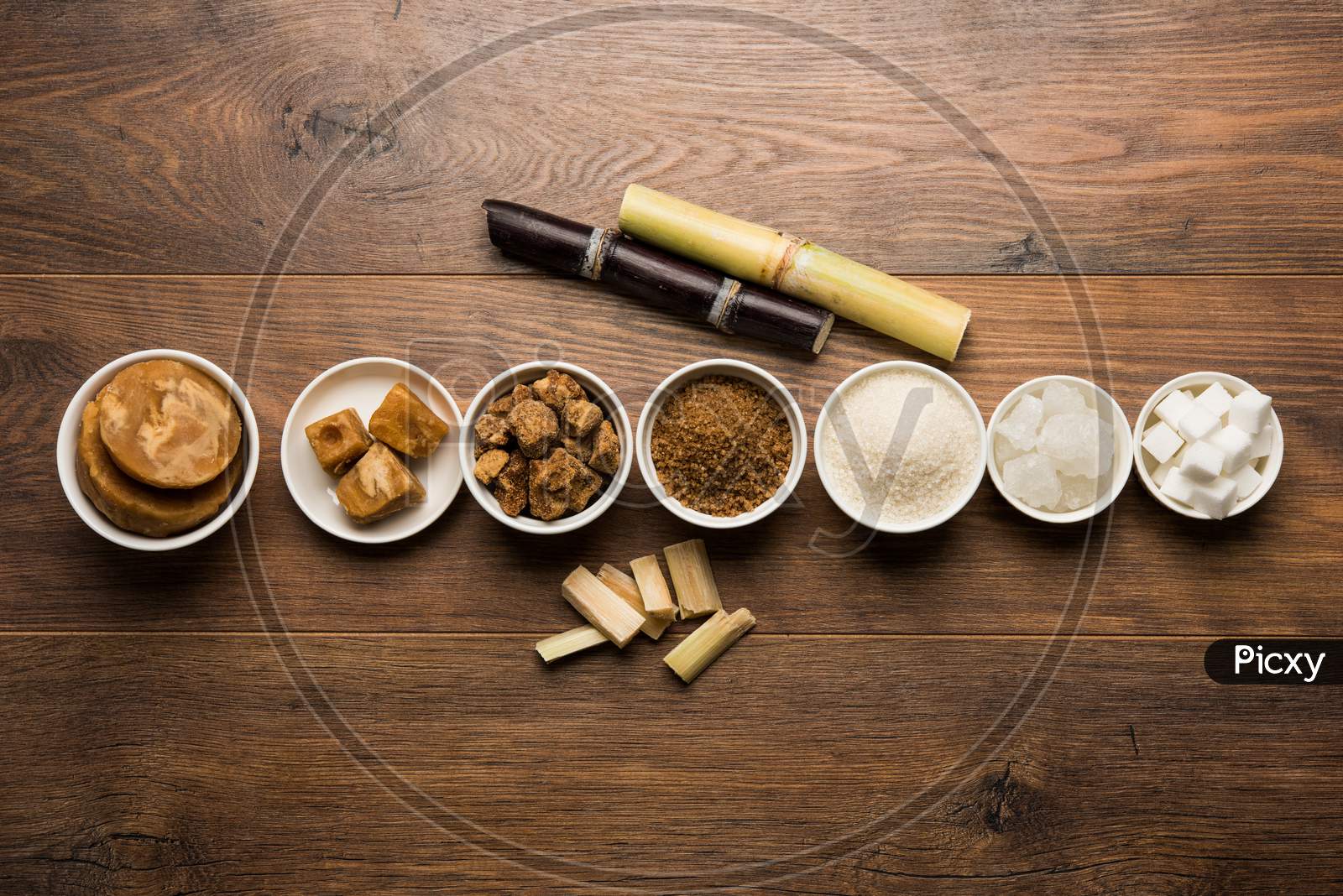Sweeteners Derived from sugar cane products That Enhance Culinary Experiences
The Comprehensive Trip of Sugar Cane: Understanding Products and Production Techniques
The trip of sugar cane is an intricate procedure that begins in exotic regions with optimal expanding problems. Cultivation methods are created to maximize yield and sustainability. Harvesting approaches vary from typical manual strategies to modern-day mechanical strategies. After harvest, sugar cane undergoes various handling phases to transform it right into granulated sugar. This expedition exposes not just the intricacies of production but also the wider effects for international markets and the atmosphere. What lies past this initial makeover?

The Background of Sugar Cane Cultivation
Sugar cane growing days back thousands of years, its beginnings can be mapped to the exotic areas of Southeast Asia, where very early farmers initially identified the plant's pleasant sap. This discovery caused the cultivation of sugar walking stick as a staple plant, gradually infecting India and the Center East. By the first millennium AD, sugar walking stick was being cultivated in these areas, where techniques for drawing out and refining sugar were developed.The plant obtained prominence in Europe during the Campaigns, as returning soldiers brought understanding of sugar production back home. By the 15th century, the establishment of sugar ranches began in the Caribbean, driven by the demand for sugar in Europe. The transatlantic slave labor sustained this growth, as enslaved labor was made use of to take full advantage of production. Over centuries, sugar cane growing evolved, influencing economic climates and societies worldwide, making it a significant farming commodity.
Expanding Conditions and Agricultural Practices
The successful farming of sugar cane counts heavily on certain growing conditions and farming practices. Ideal temperatures range in between 20 to 32 degrees Celsius, with well-distributed rainfall of 1,500 to 2,500 millimeters each year. Soil top quality is essential; fertile or sandy soils, rich in natural issue, promote healthy growth.Farmers commonly use numerous agricultural practices to improve return. Plant rotation and intercropping prevail approaches to maintain dirt fertility and control pests. Regular irrigation might be required in drier regions, ensuring that the plants receive sufficient wetness. Fertilizing, specifically with nitrogen and potassium, is crucial for robust growth.Pest and weed management strategies, including integrated parasite management (IPM), assistance to lessen losses. Sustainable methods, such as minimal husbandry and natural farming, are acquiring traction among producers to safeguard the atmosphere. Collectively, these elements add greatly to the successful production of sugar walking stick.
Collecting Techniques and Timing
In sugar cane production, the option between guidebook and mechanical harvesting substantially influences effectiveness and return. Timing is additionally crucial, as harvesting at the excellent moment guarantees maximum sugar material and reduces losses. Recognizing these elements is important for effective sugar walking stick growing.
Guidebook vs. Mechanical Harvesting
Collecting sugar walking cane includes two key methods: handbook and mechanical, each with distinct benefits and challenges. Hand-operated harvesting, generally executed by laborers making use of machetes, permits for greater precision in cutting and lowers damage to the plant. It is often favored in areas with uneven terrain or where the plant is intermixed with various other plants, as employees can navigate these complexities more efficiently. Nevertheless, it is labor-intensive and time-consuming. Alternatively, mechanical harvesting uses specialized devices to cut and accumulate the walking stick swiftly, increasing efficiency and reducing labor costs. This method is matched for massive procedures however can result in greater plant damages and dirt compaction. Inevitably, the selection in between guidebook and mechanical harvesting relies on various aspects, consisting of economic considerations and ecological conditions.
Optimal Gathering Timing
Selecting the best minute to harvest sugar cane significantly impacts both return and high quality. Perfect collecting commonly occurs when the walking stick reaches full maturation, typically in between 12 to 18 months after planting. At this stage, sucrose degrees peak, guaranteeing the very best sugar extraction rates. Weather problems also play an essential function; gathering throughout dry periods can avoid damages to the walking cane and decrease soil compaction. Additionally, keeping track of the plant's shade and fallen leave decline can indicate preparedness, as a yellowing of the fallen leaves suggests that the walking cane is ripe. Timely harvesting is essential, as hold-ups can cause reduced sugar web content and increased susceptibility to pests and diseases, inevitably impacting general production effectiveness.
Handling Approaches: From Cane to Sugar
The handling of sugar walking stick involves vital extraction methods that divide the juice from the fibrous plant material. Complying with extraction, the refining process transforms the raw juice into taken shape sugar, ensuring pureness and high quality. Recognizing these approaches is vital for comprehending the trip of sugar from walking stick to last item.
Removal Techniques Summary
Removal methods play a considerable function in changing sugar cane right into functional sugar. The cane is collected and transported to refining facilities where it goes through comprehensive washing to eliminate contaminations - sugar cane products. The next action entails crushing the walking stick utilizing hefty rollers, which launches the juice including sucrose. This juice is after that made clear via the enhancement of lime and warmth, allowing pollutants to settle out. After information, the juice is evaporated under regulated temperatures to concentrate the sugar content. Subsequently, condensation takes place, where sugar crystals are created as the focused juice cools. These strategies assure the efficient extraction of sugar while preserving the top quality required for additional processing. Comprehending these methods is crucial for go to website understanding the overall production of sugar from sugar walking stick
Refining Refine Explained
Refining sugar from the extracted juice is an essential step that enhances its purity and quality. This process entails several phases, beginning with clarification. The juice is heated up see this and treated with lime and various other agents to get rid of pollutants, leading to a more clear liquid. Next, the cleared up juice undergoes dissipation, where water is removed to concentrate the sugar web content. The concentrated syrup is then taken shape by cooling, permitting sugar crystals to form. These crystals are separated from the remaining syrup, referred to as molasses, with centrifugation. Ultimately, the raw sugar is more refined via cleaning, filtering, and drying, which removes any type of continuing to be pollutants. Completion item is the granulated sugar frequently utilized in families and sectors worldwide, ensuring consistency and sweetness.
Lasting Practices in Sugar Cane Production
Sugar cane production has actually commonly depended on extensive farming techniques, there is a growing focus on sustainable techniques that promote environmental wellness and financial feasibility. Farmers are increasingly adopting methods such as crop rotation, which boosts soil fertility and lowers parasite invasions. Integrated insect management (IPM) is also getting grip, enabling for natural killers to regulate pest populations, consequently decreasing chemical pesticide use.In enhancement, innovations in watering approaches, such as drip watering, are being made use of to conserve water resources. Lasting land management methods, consisting of minimized tillage, help prevent dirt disintegration and maintain biodiversity. Moreover, numerous producers are exploring natural farming approaches, which eschew artificial plant foods and pesticides altogether, promoting a healthier community.
The Worldwide Sugar Market and Economic Impact
Sustainable techniques in sugar walking cane production not only profit the setting however likewise affect the characteristics of the international sugar market. As customer demand shifts in the direction of morally created products, countries embracing sustainable methods acquire affordable advantages. This pattern motivates significant sugar exporters, such as click for source Brazil and India, to integrate environmentally friendly methods, consequently affecting global rates and supply chains.Moreover, variations in production due to environment modification and ecological guidelines can trigger volatility in sugar costs, affecting economic climates reliant on sugar exports. Regions that invest in sustainable farming may experience enhanced return security, leading to much better market positioning.Economic influences expand beyond specific countries, as worldwide profession arrangements and tolls shape the competitive landscape. Eventually, the interplay between lasting methods and market characteristics emphasizes the significance of adaptive approaches in a rapidly altering economic atmosphere, influencing both manufacturers and customers in the worldwide sugar market.
Advancements in Sugar Cane Utilization and Results

As the need for renewable energies grows, technologies in sugar walking stick application and by-products are transforming the farming landscape. Researchers and business owners are checking out unique applications that extend beyond traditional sugar production. One substantial development is the conversion of bagasse, the coarse residue left after juice removal, right into bioenergy and bioplastics (sugar cane products). This not only decreases waste yet likewise supplies sustainable power alternatives for processing facilities.In addition, improvements in fermentation modern technology have actually caused the production of biofuels, such as ethanol, from sugar walking cane, which adds to cleaner energy solutions. The removal of molasses has opened opportunities for producing value-added items like pet feed and specialty spirits.These technologies not just enhance the financial viability of sugar cane cultivation but also promote ecological sustainability, making sugar walking stick a critical plant in the shift towards a round economic situation. The recurring expedition of its possible remains to produce encouraging outcomes
Regularly Asked Concerns
What Are the Health Results of Consuming Sugar Cane Products?
The wellness impacts of consuming sugar cane items can differ. While they offer power and vital nutrients, excessive usage might lead to weight gain, boosted blood sugar level degrees, and a greater risk of oral problems. Moderation is crucial.
How Does Climate Adjustment Influence Sugar Cane Production?
Environment change substantially affects sugar walking stick production by altering rainfall patterns and increasing temperature levels. These changes can result in lowered returns, raised pest stress, and obstacles in preserving soil wellness, ultimately affecting both quality and quantity of harvests.
What Is the Function of Sugar Cane in Biofuel Production?
The function of sugar walking cane in biofuel production is significant; it acts as a renewable resource resource, transforming sugars into ethanol. This process lowers dependence on nonrenewable fuel sources and aids alleviate greenhouse gas emissions, advertising environmental sustainability.

Exist Any Different Sugar Acquired From Sugar Cane?
Alternative sugar stemmed from sugar walking cane include molasses and cane sugar itself. These items give sweetening choices while retaining some nutritional benefits, making them popular selections for consumers seeking natural choices to man-made sugar.
How Does Sugar Cane Farming Affect Citizen Communities?
Sugar walking stick farming significantly impacts neighborhood communities by providing employment chances, boosting local economies, and affecting social frameworks. It can also lead to environmental problems and health and wellness problems, necessitating a well balanced approach to sustainable methods - sugar cane products.